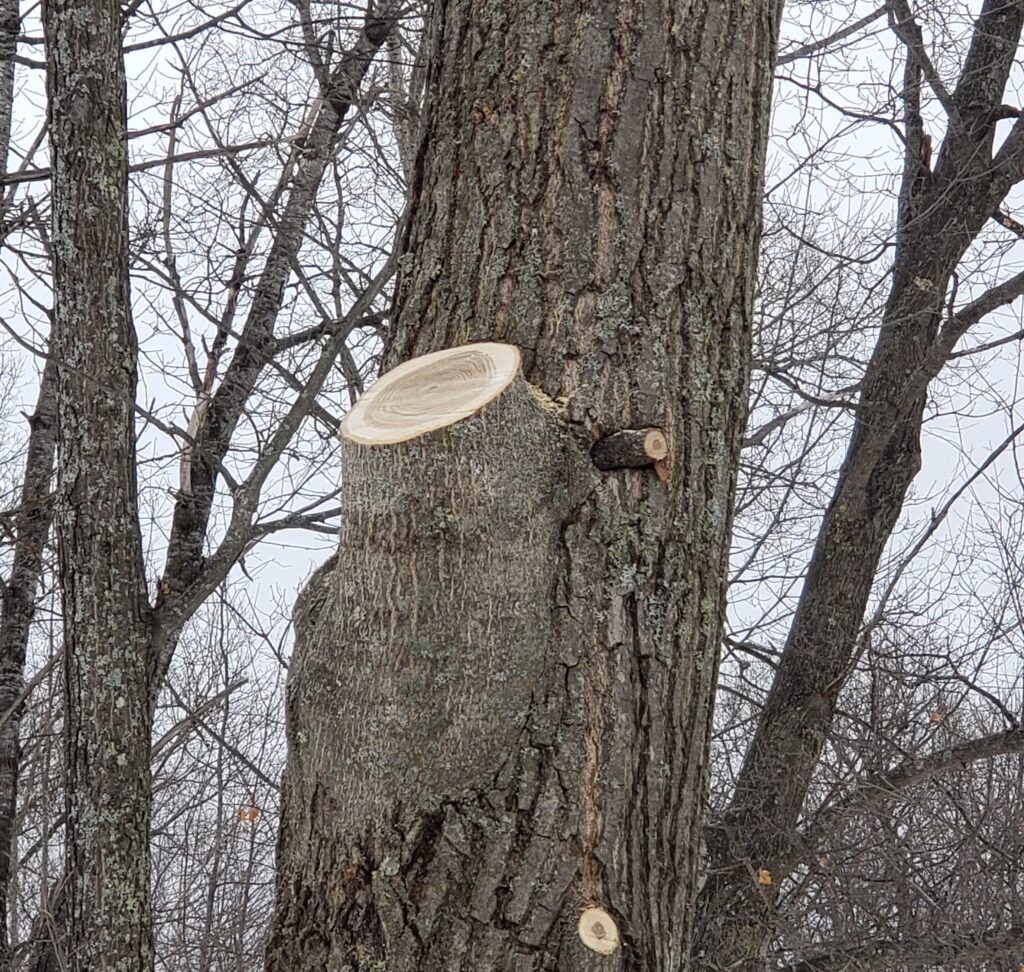Contact: Paul Cigan, DNR Forest Health Specialist
Paul.Cigan@wisconsin.gov or 715-416-4920
As April brings a high risk of the often-fatal oak wilt disease, the Wisconsin Department of Natural Resources (DNR) recommends not pruning or cutting oaks from April through July.
Oak wilt is widespread in southern Wisconsin, but it is still uncommon in much of northern Wisconsin. As spring draws people outdoors to start seasonal yard maintenance and cleanup projects, keeping those chainsaws and trimming tools away from oak trees will go a long way to ensure that they stay healthy for many more spring seasons to come.
Pruning and cutting oaks in spring and early summer makes them vulnerable to oak wilt, which rapidly kills trees in the red oak group (including pin oak, northern red oak and black oak) and weakens those in the white oak group (bur oak, swamp white oak, white oak and English oak). Any damage during this time, including broken branches caused by storms, exposes living tree tissue beneath the bark and provides an opportunity for the oak wilt fungus to attack the tree.
While tree paint or wound dressing is not normally recommended on pruned or wounded surfaces, a light application of these products immediately after an oak is damaged may be the only defense against oak wilt infection from April through July. If possible, apply within 15 minutes. Wounds are not susceptible to oak wilt after 72 hours.

Infected leaves appear dull green or bronze and will wilt and drop rapidly in the summer. The presence of dead oaks next to actively wilting oaks is often indicative of an established infection.
Photo: Paul Cigan
If something wounds an oak during this high-risk period, immediately and thoroughly apply pruning sealer or tree paint over the wound. Torn branches or roots should be cut clean and the cut surface painted. For additional protection, cover treated roots with soil.
Oak wilt spreads overland by sap-feeding beetles that carry the fungal spores from infected oak trees, logs or firewood to fresh wounds on healthy oaks in as little as 15 minutes after the wound is created. It travels underground from infected oaks to nearby healthy oaks through grafted, or interconnected, root systems.
In general, the best time to prune is in winter when trees are dormant and oak wilt disease-carrying insects are inactive.
As of March 2022, oak wilt has been found in all Wisconsin counties except Ashland, Iron, Taylor, Door, Kewaunee, Calumet and Manitowoc. Several of these counties contain the state’s highest abundance of healthy and productive oak forests. Taking recommended precautions will help keep them that way. Check with your municipality to find out if they have their own oak wilt ordinances that you should follow as well.
Oak wilt and other diseases move easily on or in firewood logs year-round, so keeping firewood local or purchasing Wisconsin-certified firewood is another critical component of protecting trees and keeping forests healthy.
You can also help by reporting oaks with sudden, mid-to-late summer leaf drop to a certified professional.
More information is available at the Wisconsin DNR’s oak wilt webpage, which includes a web interface for refining the beginning of the period when pruning, wounding and harvesting oaks should be avoided.

